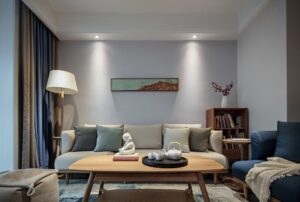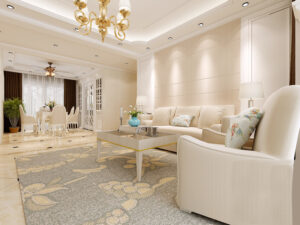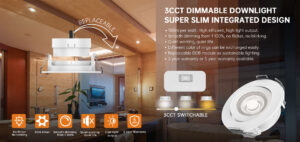The bathroom is an indispensable functional area in our home. In recent years, the role of the bathroom has surpassed its functionality and can also bring us some relaxing moments. At the same time, lighting plays a very important role in the function of the bathroom. A good bathroom lighting environment can not only greatly help our lives, but also reduce risks. The perfect bathroom lighting solution will allow us to completely put down the complicated work and life in the bathroom and relax ourselves.
At the same time, we have some questions about bathroom lighting:
- 1. What is bathroom lighting?
- 2. What kind of lights can we install in the bathroom?
- 3. Bathroom lighting: What safety hazards do we need to pay attention to?
- 4. Color temperature selection of bathroom lighting?
- 5. Is smart solutions necessary for bathroom lighting?
You will find the answers to these questions in this article.
What is bathroom lighting?
Bathroom lighting refers to the various types of lights and illumination strategies used in bathrooms to enhance functionality, safety, and aesthetics. Unlike traditional lighting setups that may rely on a single source, effective bathroom lighting incorporates multiple layers and types to accommodate different activities and moods throughout the day.
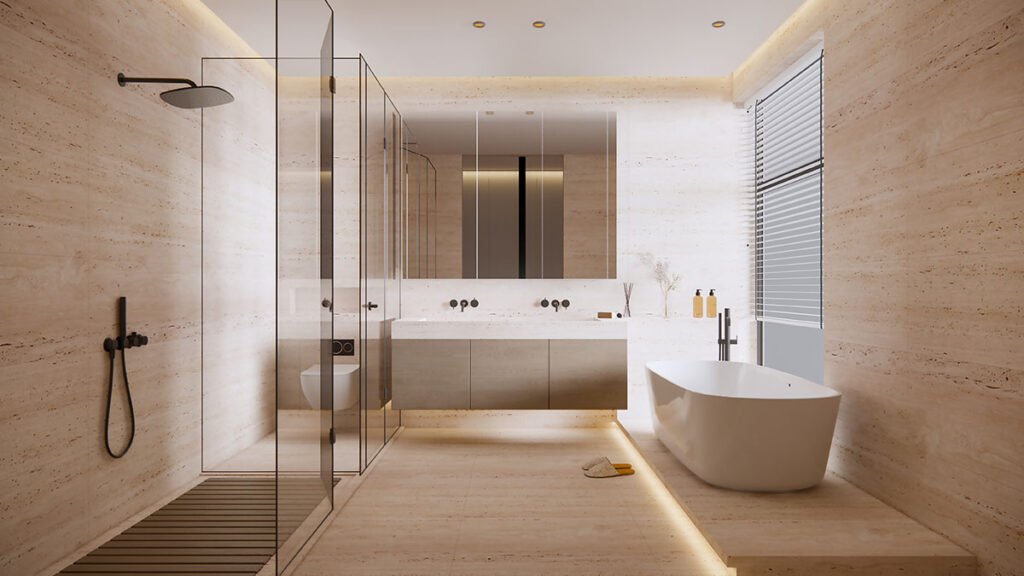
What kind of lights can we install in the bathroom?
- Mirror light: These are typically installed around mirrors and provide focused illumination essential for grooming tasks like applying makeup or shaving. They come in various styles, including bar lights with multiple bulbs and sconces that can be placed on either side of the mirror for even lighting.
- Wall Light: Wall sconces add both ambient and task lighting. They can be positioned beside mirrors or in other areas to create a warm and inviting atmosphere. Available in numerous designs, they can also serve as decorative elements in the bathroom.
- Recessed downlight or recessed spotlight: Installed into the ceiling, recessed lights provide a clean look and uniform coverage. They are particularly useful in areas where other fixtures might be obtrusive, such as above bathtubs or showers.
- LED Strip Lights: These flexible light strips can be installed under cabinets or along shelves to provide subtle illumination and enhance the overall ambiance of the bathroom.
Bathroom lighting: What safety hazards do we need to pay attention to?
Regularly check for any signs of wear and tear on electrical fixtures and cords.
Try you best to use pull-cord switches instead of wall-mounted switches to avoid contact with wet hands.
Consult a licensed electrician for any electrical installations or repairs to ensure compliance with safety standards
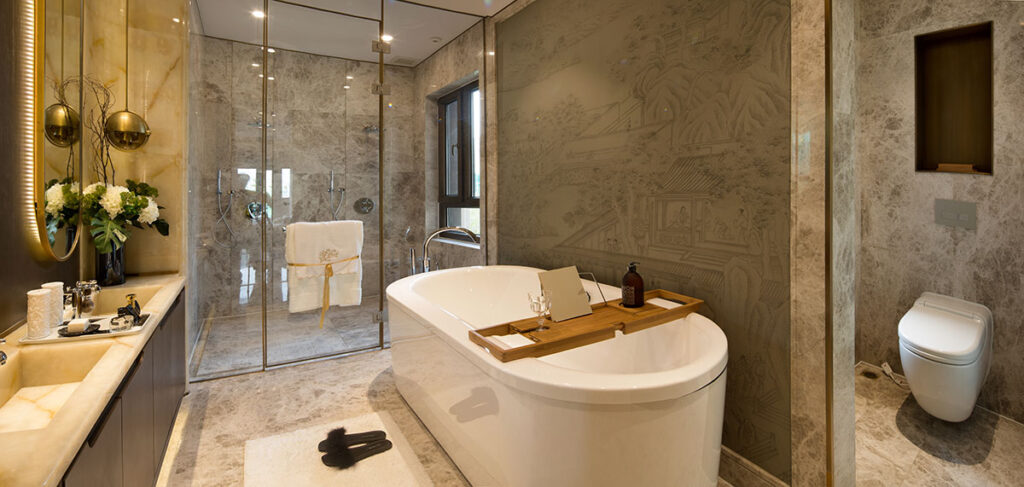
How to choose the color temperature of bathroom lighting?
Is smart solutions necessary for bathroom lighting?
- Initial Cost vs. Long-term Savings: While smart lighting solutions may have a higher initial cost, the long-term savings on energy bills and increased safety features often justify the investment.
- Installation Complexity: Depending on existing wiring and fixtures, installation may require professional assistance, especially if integrating smart switches with current setups.
- User Preferences: Assessing personal habits and preferences is crucial; some users may appreciate the convenience of smart features while others might prefer traditional controls.
Lorem ipsum dolor sit amet, consectetur adipiscing elit. Ut elit tellus, luctus nec ullamcorper mattis, pulvinar dapibus leo.
IP Rating
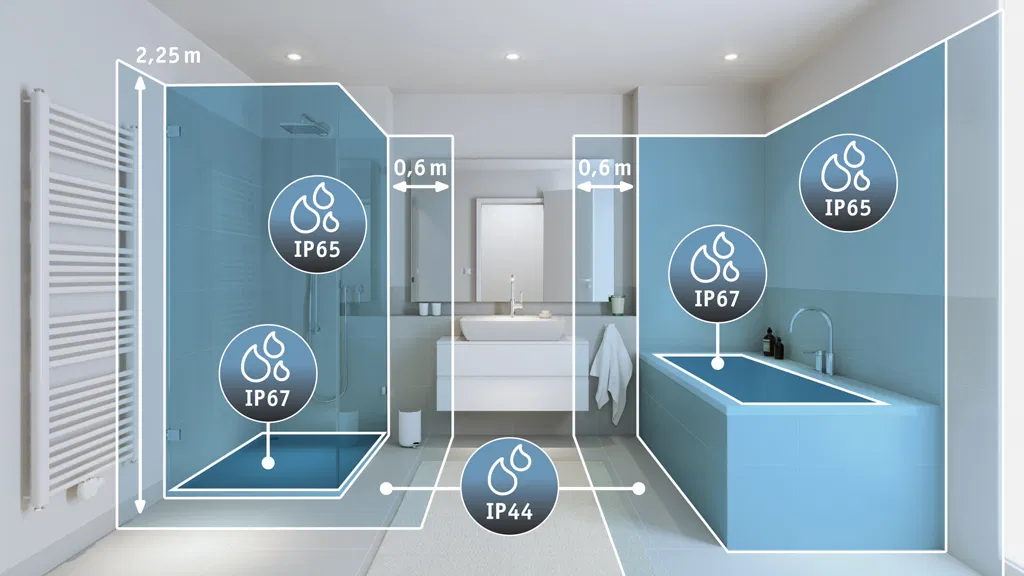
When choosing lamps for bathrooms, we should pay special attention to the IP protection index of the products we choose, which is related to the safety. The guidelines are as follows:
- If the lamp is installed in a location where water is easily accumulated in the bathtub or shower room, the IP protection level of the lamp must reach IP67.
- In the areas where water is easily spilled in the bathtub and shower room (less than 2.5m from the opposite side), the lamp must be able to reach at least IP65 protection level.
- At 0.6m away from the bathtub or shower area, the protection index of these areas where water may spill must be at least IP44.
- IP20 at least for other areas of the bathroom.
Radians: Premium Indoor & Waterproof Lighting Solutions for Demanding Environments
Expert-Backed Durability for Bathroom & Humid Spaces
Radians specializes in high-performance indoor lighting products engineered to thrive in challenging conditions. Our waterproof bathroom lighting undergoes rigorous testing with advanced tools to ensure zero leakage, corrosion, or electrical issues—even in prolonged humidity or direct shower exposure.
Precision-Crafted Fixture Range
Our technical portfolio features:
- IP65-rated downlights for wet zone compliance
- Corrosion-resistant track lighting systems
- Seamless moisture-proof panel lights
- Humidity-enduring wall-mounted fixtures
Engineering Excellence for Long-Term Reliability
Every product undergoes pressure simulations, thermal stress tests, and 500+ hour humidity cycles. We utilize marine-grade aluminum housings and hermetically sealed LED modules to ensure decade-long performance in steam rooms, commercial kitchens, and outdoor-covered areas.
Summary of bathroom lighting:
In order to make the overall lighting brightness of the bathroom sufficient, we should not only use recessed downlights and spotlights, but also use some auxiliary lamps, such as mirror lights and chandeliers. In addition, we can also use some wall lamps or light strips for decoration.



